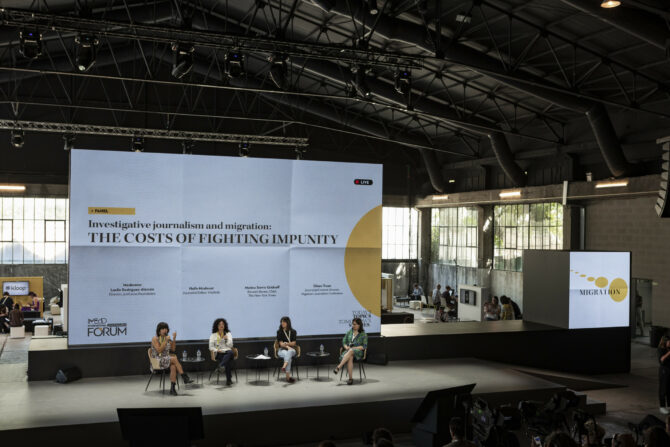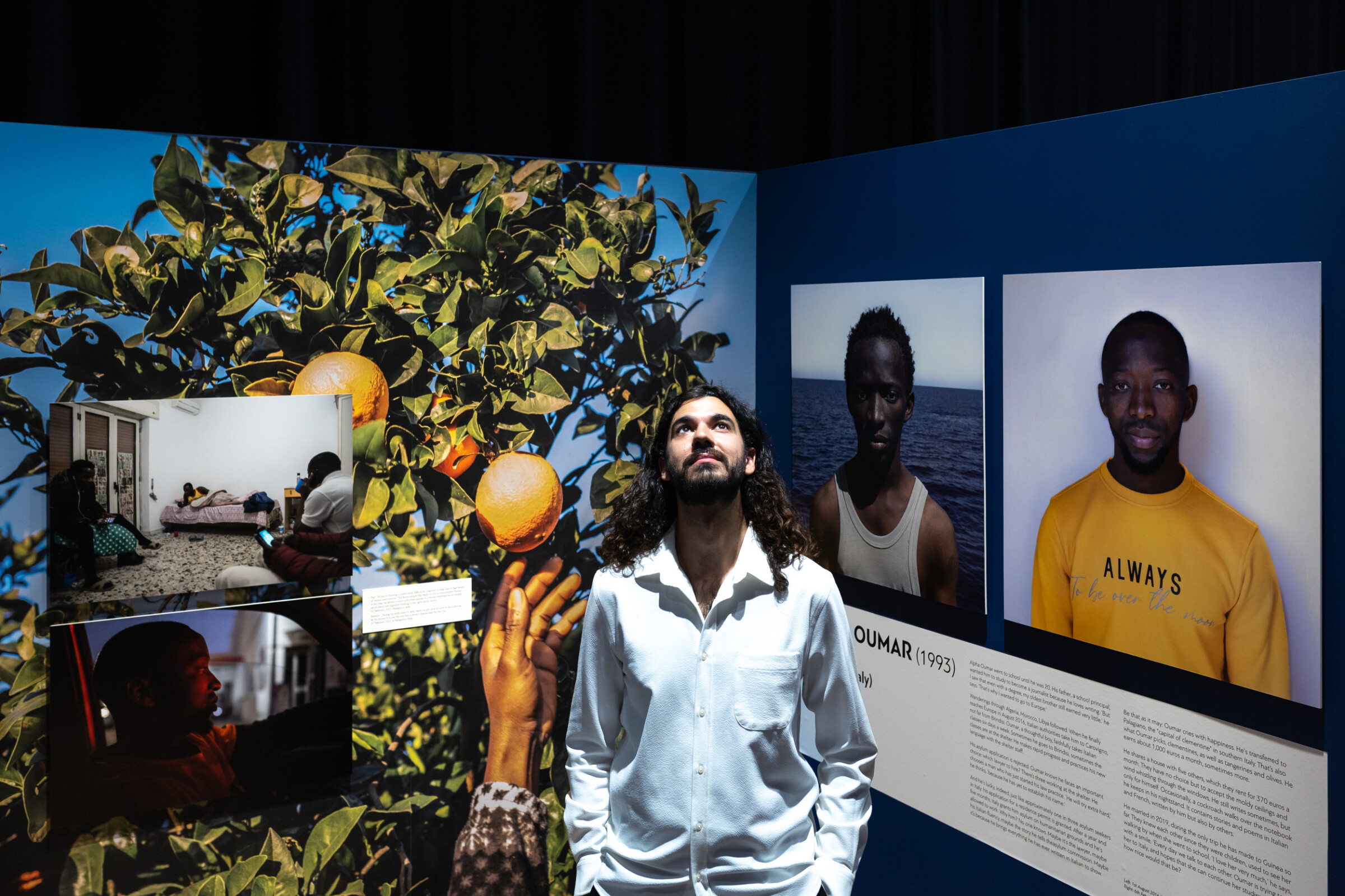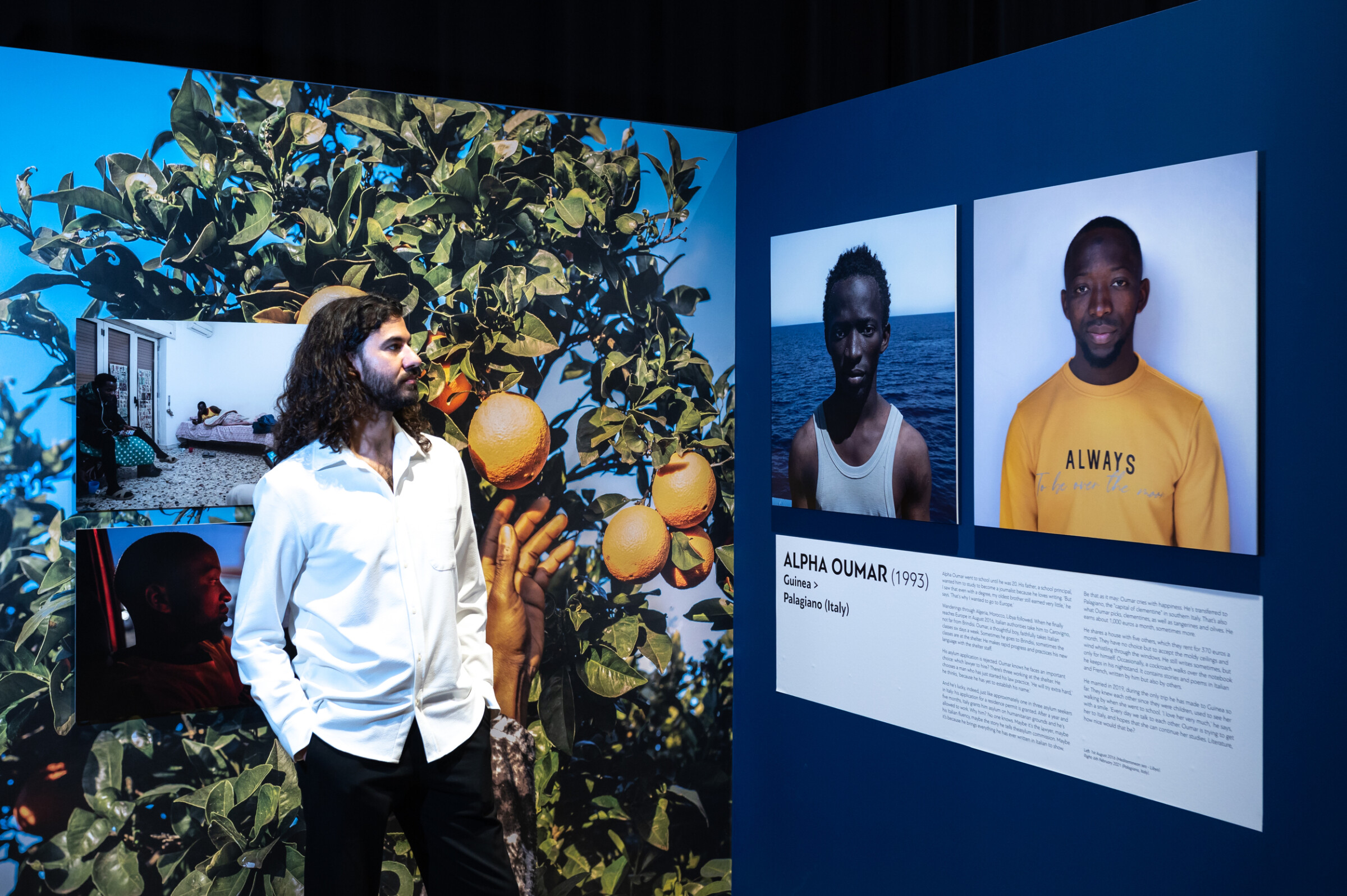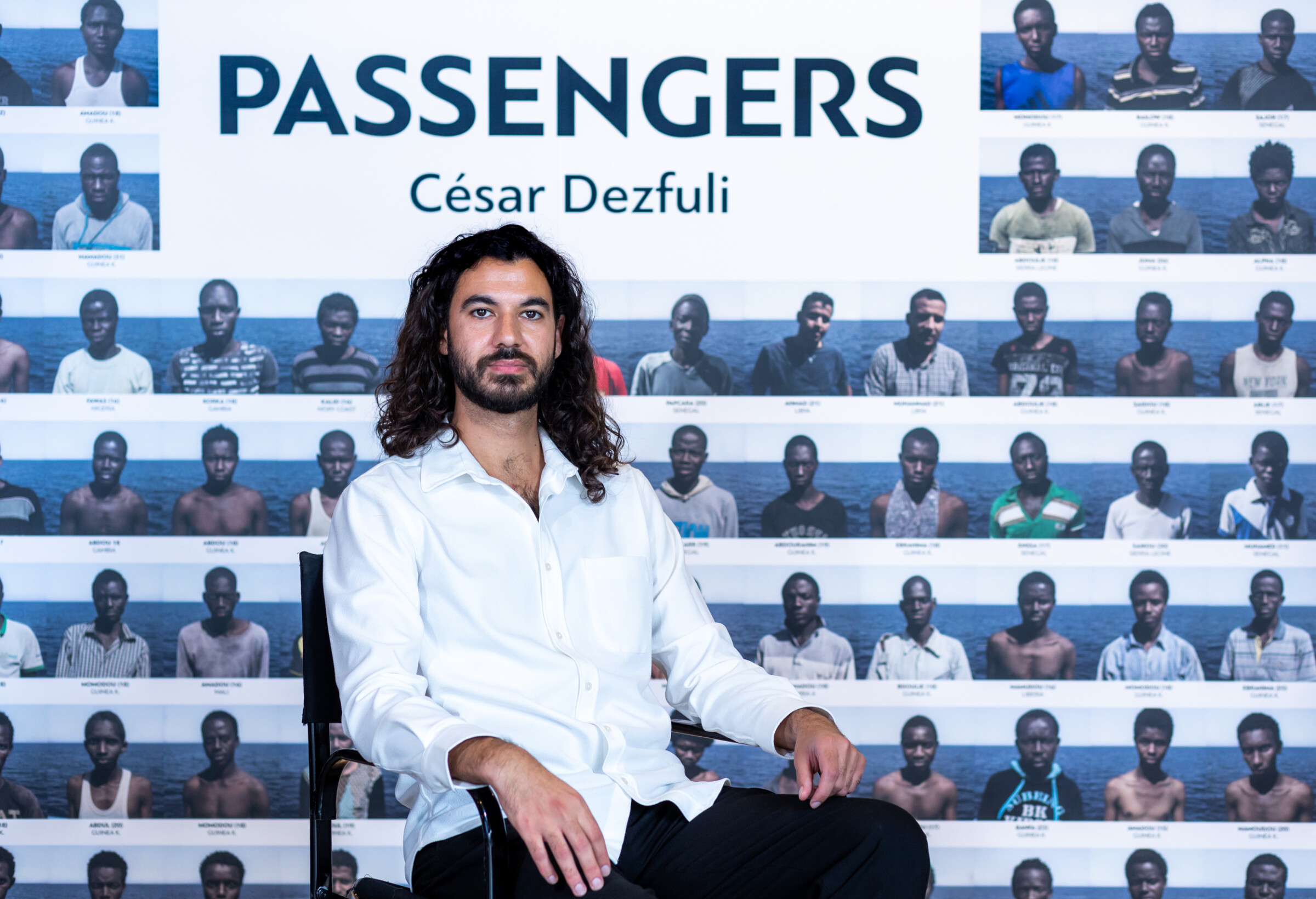César Dezfuli’s images narrate the stories of the central figures in the refugee/migration crisis in Europe. Going beyond mere statistics and numbers, these photographs document the integration of migrants from West Africa into various countries on the Old Continent.
Migration crisis: collateral damage of the EU’s “development” agenda

During a one-on-one with Haïfa Mzalouat, Journalist and Editor-in-Chief of the independent, Tunis-based, media group, Inkyfada, iMEdD unravels the bloody business of migration in Tunisia, the EU’s role and the reality of being a migration journalist.
On September 30, 2023, shortly after 12 noon at 260 Pireos Street, Athens, photojournalist César Dezfuli takes the stage as part of the iMEdD International Journalism Forum. As one of the 2023 winners of the World Press Photo award, he is set to participate in the panel titled “Winners’ showcase projection by World Press Photo,” where he will present a segment of his work and engage with the audience by addressing their questions.
Seven years ago, on August 1, 2016, Dezfuli found himself aboard the rescue vessel Iuventa. Having been part of the crew for approximately three weeks, he dedicated his time to capturing the rescues of refugees and migrants in the Central Mediterranean. Little did he know that the events of that particular day’s rescue would leave an indelible mark on his career, resonating with him for years to come.
According to UNHCR figures, more than 370.000 refugees and migrants arrived in Europe by land and sea in 2016. Specifically, in August 2016 alone, more than 25.000 arrived on the continent by sea in search of a better tomorrow.

Dezfuli was not interested in numbers and statistics. On that August day, he was contemplating how to capture the personal testimonies of these individuals—the stories behind the numbers.
About twenty nautical miles off the Libyan coast, the Iuventa would rescue 118 refugees and migrants, primarily from West African countries. After having them record their name, age, and country of origin on a piece of paper, Dezfuli took portraits of all those rescued, with the Mediterranean Sea as a backdrop. This initiative led to the creation of his project “Passengers,” for which the Spanish-Iranian photojournalist would receive two of the most prestigious journalism prizes in 2023: the World Press Photo and the European Press Prize.
Typically, people who migrate are depicted from a position of power. When I found myself in that position, I recognised that to contribute something meaningful, I had to shift that perspective. And that’s precisely what I’m working towards.
César Dezfuli, Spanish-Iranian journalist & documentary photographer.
“We need to shift the visual language we use if we want to reconnect people with certain stories and themes. Immigration is one of those narratives. We can’t persist in portraying immigrants the way we have in the past. I firmly believe that the relationship Europeans have with the rest of the world needs to evolve to make this change. Typically, people who migrate are depicted from a position of power. When I found myself in that position, I recognised that to contribute something meaningful, I had to shift that perspective. And that’s precisely what I’m working towards.” These were among the initial words Dezfuli shared with me when we met in Athens at the iMEdD International Journalism Forum, where his photographic exhibition, “Passengers,” was showcased from September 28 to 30, 2023.
Yet, the story of the “Passengers” doesn’t conclude on that August morning. Approximately a year later, Dezfuli traced one of the boat’s occupants on Facebook using the data he had gathered. From that point forward, he embarked on a journey to track and document the lives of these individuals, capturing moments from their daily lives in various European countries. This approach aimed to draw the viewer nearer to the migrant experience, infusing a more personal character into their stories.
While Dezfuli started his career by writing for newspapers and magazines, along the way, he chose the camera as a medium for telling his stories. “Photography is a different language,” he tells me when I ask him about this choice of his. “Many photojournalists fail to comprehend photography as a language; they use it merely as a tool to convey messages without grasping the profound impact an image can have. Nowadays, the connection between people and images has grown superficial, underscoring the need for cautious selection when incorporating elements of reality into a photograph. And, let’s not forget, the world is always changing. Photography is changing. People’s relationship with this medium is not what it used to be 30 years ago. So if we want people to reconnect with specific stories and contexts, introducing a shift in the visual language is crucial.”
Therefore, the images within his work transport us to Italy, France, Germany, Spain, and Belgium, revealing how European societies embrace and incorporate 72 of the 118 individuals from that boat. Despite arriving in Europe simultaneously, their lives take divergent paths a few years later. While some successfully obtained asylum, legal status, and language proficiency, others find themselves without shelter, employment, and even contemplate returning to their home countries.

I hope that through my work, people will witness the stories of these individuals, fostering a shift in how society deals with refugees and migrants who will follow in their footsteps.
César Dezfuli, Spanish-Iranian journalist & documentary photographer.
Seven years since that August day, Dezfuli continues to work on his project. His aim is to identify and document the “new” life in Europe of the 118 people he first photographed in 2016. “The issue is that we keep discussing migration, focusing solely on borders and security. “Migration is inherent in human nature; people will inevitably move from one place to another, regardless of the height of fences we build. That’s why it’s crucial to focus on the reality and experiences of these individuals. Telling this story comprehensively requires delving into the lives of its protagonists. Shifting our focus away from the borders and examining the broader context is essential. It involves understanding what these people’s lives entail after they cross the border.”

Dezfuli’s work has garnered significant recognition, with a piece featured in collaboration with journalist Maartje Bakker in the Dutch newspaper De Volkskrant, titled “The Long Road to a Home in Europe.” This story earned them the European Press Prize in the Migration Journalism Award category in 2023. Additionally, the “Passengers” project itself secured the World Press Photo in 2023, winning in the Open Format category for Europe. These awards have not only brought visibility to his work but have also spotlighted the stories of the individuals captured by the photojournalist. “I hope that through my work, people will witness the stories of these individuals, fostering a shift in how society deals with refugees and migrants who will follow in their footsteps. And this is something I already observe. I see colleagues drawing inspiration from my work, and that imparts meaning to what I do. Each time I share my project, there’s a feeling that people are reevaluating their perspectives or gaining new knowledge.”
Dezfuli is determined to continue his project, although it is not his sole professional undertaking. Just a few days before our meeting in Athens, he was in Morocco, providing coverage of the devastating earthquake that claimed the lives of more than 2,500 people. Prior to that, he had worked in Kosovo, Kenya and China. “Ultimately, that’s the essence of journalism. Journalism is a response to a need in society; it is not something separate from society. That’s why there has to be a constant interaction between the two,” he shares with me just before we conclude our conversation.”
